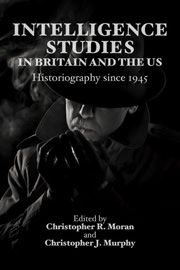Book contents
- Frontmatter
- Contents
- The Editors
- The Contributors
- List of Figures
- Preface
- Acknowledgements
- Introduction: Intelligence Studies Now and Then
- Part I AMERICAN INTELLIGENCE HISTORIOGRAPHY
- 1 CIA History as a Cold War Battleground: The Forgotten First Wave of Agency Narratives
- 2 The Culture of Funding Culture: The CIA and the Congress for Cultural Freedom
- 3 ‘Real Substance, Not Just Symbolism’? The CIA and the Representation of Covert Operations in the Foreign Relations of the United States Series
- 4 Bonum Ex Malo: The Value of Legacy of Ashes in Teaching CIA History
- 5 Narrating Covert Action: The CIA, Historiography and the Cold War
- 6 FBI Historiography: From Leader to Organisation
- 7 Reconceiving Realism: Intelligence Historians and the Fact/Fiction Dichotomy
- 8 The Reality is Stranger than Fiction: Anglo-American Intelligence Cooperation from World War II through the Cold War
- Part II BRITISH INTELLIGENCE HISTORIOGRAPHY
- Index
8 - The Reality is Stranger than Fiction: Anglo-American Intelligence Cooperation from World War II through the Cold War
from Part I - AMERICAN INTELLIGENCE HISTORIOGRAPHY
Published online by Cambridge University Press: 05 October 2013
- Frontmatter
- Contents
- The Editors
- The Contributors
- List of Figures
- Preface
- Acknowledgements
- Introduction: Intelligence Studies Now and Then
- Part I AMERICAN INTELLIGENCE HISTORIOGRAPHY
- 1 CIA History as a Cold War Battleground: The Forgotten First Wave of Agency Narratives
- 2 The Culture of Funding Culture: The CIA and the Congress for Cultural Freedom
- 3 ‘Real Substance, Not Just Symbolism’? The CIA and the Representation of Covert Operations in the Foreign Relations of the United States Series
- 4 Bonum Ex Malo: The Value of Legacy of Ashes in Teaching CIA History
- 5 Narrating Covert Action: The CIA, Historiography and the Cold War
- 6 FBI Historiography: From Leader to Organisation
- 7 Reconceiving Realism: Intelligence Historians and the Fact/Fiction Dichotomy
- 8 The Reality is Stranger than Fiction: Anglo-American Intelligence Cooperation from World War II through the Cold War
- Part II BRITISH INTELLIGENCE HISTORIOGRAPHY
- Index
Summary
This chapter will first consider the odd relationship that existed between the British Secret Intelligence Service (SIS) and the American Office of Strategic Services (OSS) and its successor, the Central Intelligence Agency (CIA), during the waning days of World War II and the beginning of the Cold War. In addition to surveying a number of pertinent memoirs and biographies, it will examine fictional accounts of espionage. The lion's share of the analysis will be devoted to John le Carré's classic espionage novel Tinker, Tailor, Soldier, Spy, published in 1974. The novel, which has recently been made into a feature film starring Gary Oldman and Colin Firth, underscores the underlying distaste, widely felt in the SIS, for the American role in intelligence-gathering during this period. To be sure, this was not a majority view. Despite some embarrassing moments, both the United Kingdom (UK) and United States (US) were able to work together productively, for the most part, to track down the Nazis and Soviets who were working against the Allies. But the dissimilarity in the two nations' approaches to espionage and special operations was sufficiently pronounced to become part of recently written histories of the period and healthy fodder for spy fiction.
- Type
- Chapter
- Information
- Intelligence Studies in Britain and the USHistoriography since 1945, pp. 172 - 180Publisher: Edinburgh University PressPrint publication year: 2013



